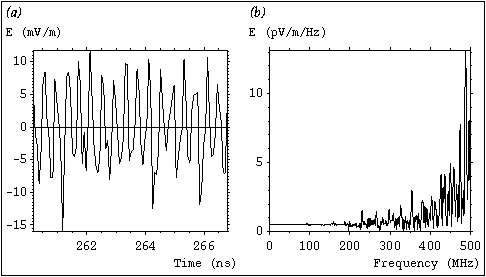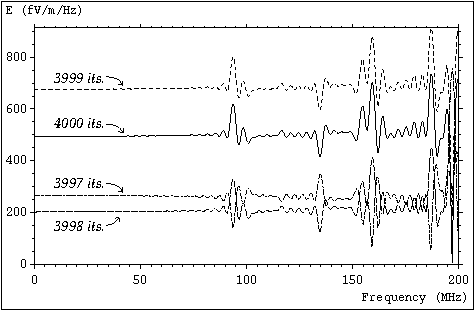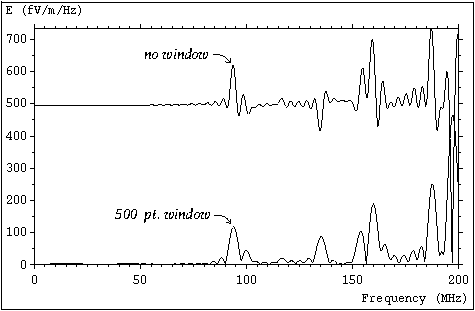
If the time domain signal has a significant high frequency content which does not decay with time, then the DFT will produce very poor results. Features of this are a significant sin(x)/x presence and a noise level which is highly dependant on the number of timesteps. This problem may be reduced by applying a standard single-sided window function, such as the Bartlett (triangular) or Hanning (raised cosine) windows, rather than the implicit rectangular window. The window should be single-sided since the data near t=0 makes a significant contribution to the impulse response. The disadvantage of these windows is that any resonance peaks will be broadened and their amplitude reduced. A better solution is to only reduce the magnitude of the last n values, where n is much less than the number of timesteps. The idea is to minimise the effect of the truncation whilst keeping as much data as possible unaffected.

This data was obtained from a simulation of an undamped screened room excited by an electrically small source with an impulsive time function. The small size of the source means that most energy is injected at high frequencies. The last 100 time domain values are shown in below (a), together with the frequency response obtained from all 4000 timesteps (b). It is found that the noise level, observable in the range 0-200 MHz is highly dependant on the number of timesteps and some resonance peaks are inverted.

The frequency response over this frequency range when the number of timesteps is varied from 3997 to 4000 is shown below. The problem arises because the value at each successive time point is large compared to the running sums used in the DFT, so that the addition of one more value causes a significant change.

The effect of a 500 point single-sided linear window is shown below. The noise level has effectively been removed and the resonances are all maxima. In addition, the same curve is obtained if the number of timesteps is changed slightly.

To avoid this kind of problem, it can be benefical to use a band-limited excitation.
There is more ...